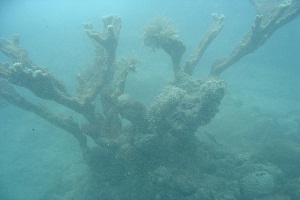http://www.wlox.com/
Posted: Jul 05, 2013 6:41 PM EST Updated: Jul 05, 2013 7:02 PM EST
By Steve Phillips – bio | email
GULFPORT, MS (WLOX) – Scientists studying the impact of the Deepwater Horizon oil spill invited the media aboard their research vessels Friday morning during a stop at the Port of Gulfport. Much of their research has focused on the oil spill’s impact on coral reefs in the Gulf.
The scientists gave a tour of their working laboratories aboard the Nautilus and the Endeavor. One researcher says the area around the Deepwater Horizon site is probably the best surveyed section of sea floor in the world. Still, three years after the oil spill, they are just beginning to discover the extent of its impact. The research vessel Nautilus uses a pair of remote operated vehicles or ROVs to explore coral reefs in deep water all around the oil spill site in the Gulf.
“We’ve been going back and taking pictures of the same corals, leaving physical markers on the floor, visiting the exact same coral colonies again and again, every three to four months since the spill occurred,” said Dr. Erik Cordes, the chief scientist aboard. Early images showed definite damage to the corals near the Deepwater Horizon site. The follow-up study on the health of the coral continues with varying results. “The story is really mixed. Some of them seem to be doing better than they were three years ago. And a lot of them seem to be doing much worse,” said Dr. Cordes.
While the Nautilus team focuses on coral, scientists aboard its sister research ship Endeavor are busy looking at what happens with oil and gas as it moves through the water column from sea floor to sea surface. “We’ve been doing experiments to see what happens to oil when it falls to the sea floor, when it rises up and what happens when the carbon from the oil enters organisms and move through the food web,” said Dr. Joseph Montoya, a professor of geology at Georgia Tech University. Large devices on deck allow the team to collect both sea floor sediment and water samples from around the oil spill site.
“We are interested in both what’s happening to the oil that was released during the Deepwater Horizon incident and in understanding what happens to oil in general terms so that we’ll be prepared if this were ever to happen again,” said Dr. Montoya.
“There are so many unanswered questions still to pursue. We’ve I think come up with some answers on this cruise, but I think we’ve come up with a lot more questions,” Dr. Cordes admitted.
The research consortium includes scientists from 17 different universities. The project headquarters is at the University of Mississippi.
